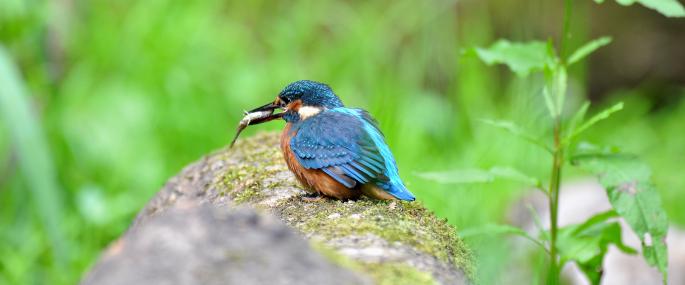A famously colourful bird of rivers and streams, the kingfisher can be spotted sitting quietly on low-hanging branches over the water, suddenly diving in to catch a small fish. Kingfishers breed near lowland watercourses and lakes which have suitable banks for burrowing nests and shallow edges for feeding. They occasionally visit gardens.
Kingfishers are vulnerable to harsh winters and habitat degradation such as pollution and the unsympathetic management of riverbanks. The Wildlife Trusts manage many wetland nature reserves for the benefit of the wildlife they support. You can help by supporting your local Trust and becoming a member; you'll find out about exciting wildlife happenings, events on your doorstep and volunteering opportunities, and be helping local wildlife along the way.
